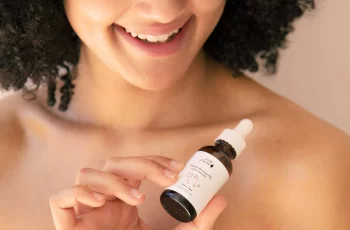
Summer Skin Care Problems and Natural Solutions
If you live in a country with harsh summers, it is important to change your skin care habits to address summer-specific skin problems. Heat and extreme humidity can lead to many skin conditions, and you need targeted prevention and treatment.
If you don’t know what is good for your skin in specific weather conditions, simply following a strict skin care routine may not be the solution. Sweating is higher in summer, the skin produces too much oil, and dust particles can easily attach to the skin. Skin irritation and inflammation as well as increased acne are becoming a common problem.
However, if you know what works best for your skin and stick to following a few simple steps, you can address these skin issues and get that summer glowing skin in no time.
First, we have to find out the most common skin problems in summer and address them.
1 Tanning:
Tanning is the most common problem in summer. Seven minutes in the sun can make your skin darker and lead to many skin problems.
To protect your skin from allergies, you should try to avoid sun exposure. Sunscreen is a must, and you can also add products containing vitamin C to your skincare routine to ensure complete sun protection.
Wear long sleeves and sunglasses, and try to stay in the shade.
2. Acne:
The humidity in the summer makes people sweat a lot whether they are indoors or outdoors. Sweat mixes with bacteria, and excessive sebum secretion can clog the skin pores, leading to acne.
The most common mistake we make to avoid acne breakouts is to wash our faces 3-4 times a day to remove dirt, oil, and general stickiness. This actually makes the situation worse. By washing your face more frequently, your skin loses essential oils and nutrients and becomes dry.
As a result, your brain produces more sebum than normal. The solution to this problem is to clean your face twice a day with a gentle cleanser if possible, and exfoliate once a week.
Wear clean clothes and use a clean towel to keep your skin healthy.
3. Mask:
Wearing a mask is essential in this epidemic, but masks also make it difficult for our skin to breathe. In order to prevent acne from developing by wearing a mask, it is important to ensure that the pores are not blocked.
The friction between the mask and the skin can cause irritation. Wearing a clean mask made of comfortable fabric is an important step in preventing it.
Use a hydrating toner and moisturizer to ensure your skin is nourished without being greasy.
4. Skin rashes:
Extremely hot weather can cause itchy blisters due to clogged sweat glands and sweat being trapped in the folds of the skin.
You can apply cold compresses to the rash to get rid of it faster. Cold showers can also help. To avoid these rashes, wear lightweight, breathable clothing that allows the sweat to evaporate and cool the skin without irritating it.
5. Dry skin:
The sun can dry out our skin by absorbing moisture and dehydrating it.
Don’t make the mistake of thinking that your skin doesn’t need a moisturizer in humid weather. If you don’t moisturize it, you increase the chances of your skin developing spots and wrinkles faster.
During the summer months, your skin may even become flaky, itchy, and develop blisters and swelling. To prevent this from happening, you shouldn’t use a face wash that is irritating to the skin and strips it of all its nutrients.
To counteract the drying effects of the sun, it’s important to use a non-greasy, non-sweaty moisturizer. You can also combine it with a mild, cooling cleanser.
6. Folliculitis:
During summers, the risk of folliculitis increases. Folliculitis occurs when hair follicles grow into the skin.
The hair follicles can cause irritation and look like pimples. These are caused by wearing tight clothes. Coupled with sweating in summers, this can irritate your skin. Wearing loose-fitting clothes and using cleansers and soothing toners containing AHAs are the best ways to combat this condition.
7. Melasma:
Melasma develops due to chronic overexposure to the sun. It causes brown spots to form on the face and neck area. The sun’s harmful UVA and UVB rays affect our skin pigmentation melanin and discolor our skin.
The common mistake of not using sunscreen while indoors can lead to this skin condition and cause premature aging.
Look for a broad-spectrum sunscreen of SPF 30++ and reapply every 20 minutes when in direct sunlight. Applying sunscreen twice a day is sufficient if staying at home.
Use a sunscreen that blends well with the skin and does not leave a sheen or white film. Water-based sunscreens get absorbed faster into the skin and provide better protection against sun damage.
8. Yeast Infection:
Certain yeasts can survive on our skin all year round and spread faster through sweat during summers. Due to this infection, you get tan easily and also develop scaly patches on your skin.
To prevent this, focus on effective cleansing and cooling.
The new Summer Essential range by Auli is designed to give you a sweat-free, oil-free, and non-acne treatment.
Alpha is a gentle AHA cleanser with essential oils that cleanses and moisturizes your skin from within. It controls oil production and provides your skin with the nutrients it needs.
Dazzle can be used as both a hydrating floral spray and a makeup setting spray. It minimizes the appearance of pores and ensures oil and sweat control.
PomoGlow is a gel-based 3-in-1 solution that naturally prevents sun damage and repairs, hydrates, and moisturizes. The healing properties it contains reverse aging and treats tans.
Damn, Sun! is the only sunscreen you need all year round. It provides you with broad spectrum sun protection with SPF 30++ and is absorbed into the skin without leaving any residue.
Experience summer like never before and glow with natural, non-irritating skincare.
Brand Story
Auli is dedicated to providing effective and affordable natural solutions to skin problems. The Auli team is passionate about revolutionizing skincare and simplifying the jargon. Auli products are effective skin care solutions that effectively help people achieve healthy, naturally glowing skin while treating specific skin concerns. Enriched with active ingredients, Auli always strives to provide a steady stream of products and skincare awareness to its members. Auli is a complete lifestyle upgrade experience that combines the best of both worlds of modern science and Ayurveda.


